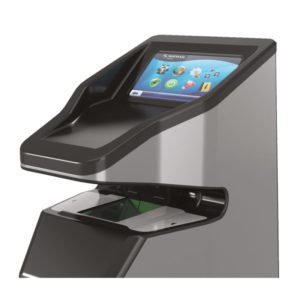Last year was a big one for mobile biometrics. As we observed in previous entries in our 2015 Biometrics Year in Review, most of our survey respondents strongly agree that major tech companies like Apple, Samsung, Microsoft and Google have played a major role in bringing biometrics into everyday life. Much of that biometric championing has been through the medium of the smartphone, on which biometrics became standard fare by the end of 2015. That said, the world of strong identity management is not dependent on mobile tech, and many important applications from the past year are decidedly stationary.
This being the case, we asked our survey respondents to weigh in on how much they agree with the following statement:
Only 4.43 percent of respondents disagreed at all with this statement, with the largest segment (62.03 percent) generally agreeing and the remainder (33.54 percent) strongly agreeing. It’s not difficult to see why such non-mobile technologies remain popular, as some of the most vitally important biometric applications use stationary authentication solutions. In 2015, the most visible of these were border control, biometric security and physical access control.
The Importance of Stationary Biometrics

The case-in-point for biometric innovation outside of the mobile sphere is the award winning MorphoWave solution from Morpho (Safran)—a stationary physical access control solution that has applications in border control, which was unveiled at last year’s ISC West. The technology allows for a user to be authenticated in seconds by a simple wave of her hand, allowing MorphoWave to scan all of her presented fingerprints without the need to make contact.
Stationary solutions also brought biometrics into the traditionally resistant environment of the school in 2015. St. Mary’s catholic high school in St. Louis deployed a camera-based facial recognition security system that both controlled access to facilities and identified unwanted persons. Such a comprehensive solution was a big win for the public perception of biometrics (considering the technology’s controversial difficulties in educational facilities), but it also highlighted the benefits to non-mobile solutions. In a school situation, it may be unreasonable at this point to expect students and teachers to have up-to-date smartphones for a variety of financial and ethical reasons. When the biometrics are built into the school, however, everyone can benefit from the next-gen convenience and security.
Combining Stationary and Mobile Biometrics in The Verticals
A key component to the importance and indeed the longevity of stationary biometric technologies is that that they have the potential to be supplemented by innovations in mobility. The law enforcement vertical is an excellent example of this, using in-the-field biometric capture via handheld but also facial recognition software applied to CCTV systems.
Physical access control is also a vertical that can benefit from mobility without solely being the realm of the handset, while primarily serving its basic function. Bring your own credential solutions, enabled by mobile biometric and NFC tech, have been gaining increased interest over the past year. Additionally, mobile enrollment tech can supplement the static technology that aids in biometric elections and national ID, and banks can offer both mobile and in-branch strong authentication solutions as their needs see fit.
That having been said, as much as mobile biometrics have been benefiting from consumer hype, strong identity management is too big to be contained by one paradigm of delivery, no matter how convenient it might be.
Staying In The Future
 The border control eGate market is expected to continue growing, and while experts do see mobility eventually coming in to supplement parts of the process, the increased need for international security in the age of terrorism will be served by static biometrics. Supplemented by enrollment services, border control will likely continue to be an active space for non-mobile biometrics applications.
The border control eGate market is expected to continue growing, and while experts do see mobility eventually coming in to supplement parts of the process, the increased need for international security in the age of terrorism will be served by static biometrics. Supplemented by enrollment services, border control will likely continue to be an active space for non-mobile biometrics applications.
Governmental applications, like biometric elections and national ID programs show no sign of becoming less popular either, with many countries having taken big steps in biometric democracy over the past 12 months. While these can be supplemented by mobile enrollment kits to reach citizens in remote areas, and indeed, we are beginning to see some of the first steps toward mobile-device ready eID, stationary biometric technologies will likely remain integral to this process.
Finally, mobile biometric technology seems to be coming full circle thanks to the need for strong identity management in the Internet of Things. New connected devices are increasingly leveraging the innovations allowed by mobile authentication—low cost, small size—to enable a new generation of static biometrics tech with applications for consumer, enterprise and industrial markets. It’s true, looking back over 2015, mobility grabbed a lot of the focus, particularly in the area of consumer devices, but there is still a vital role being played by non-mobile biometrics.
*
Stick with FindBiometrics throughout January as we bring you more results from our 13th annual Year in Review. Be a part of the conversation by following us on Twitter and tweeting with the hashtag #FB2015.
—
January 19, 2016 – by Peter B. Counter




Follow Us